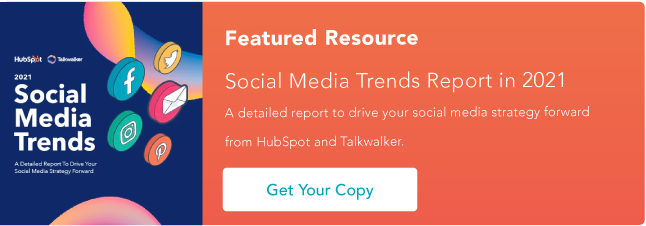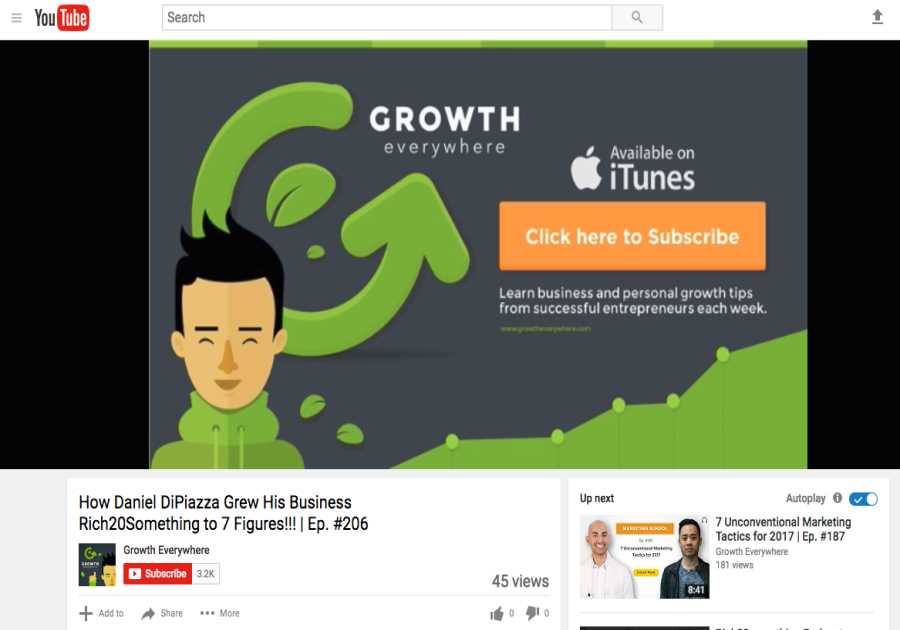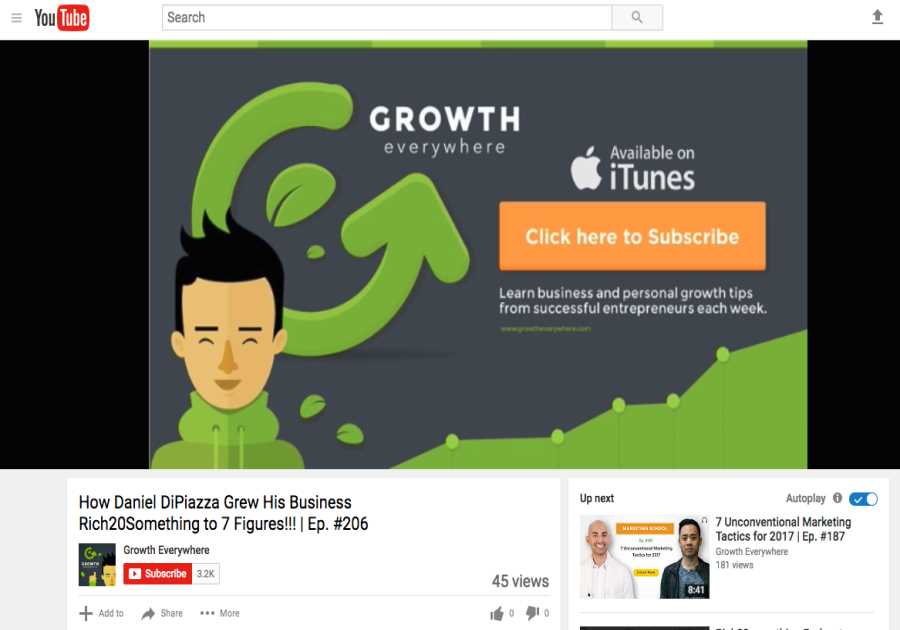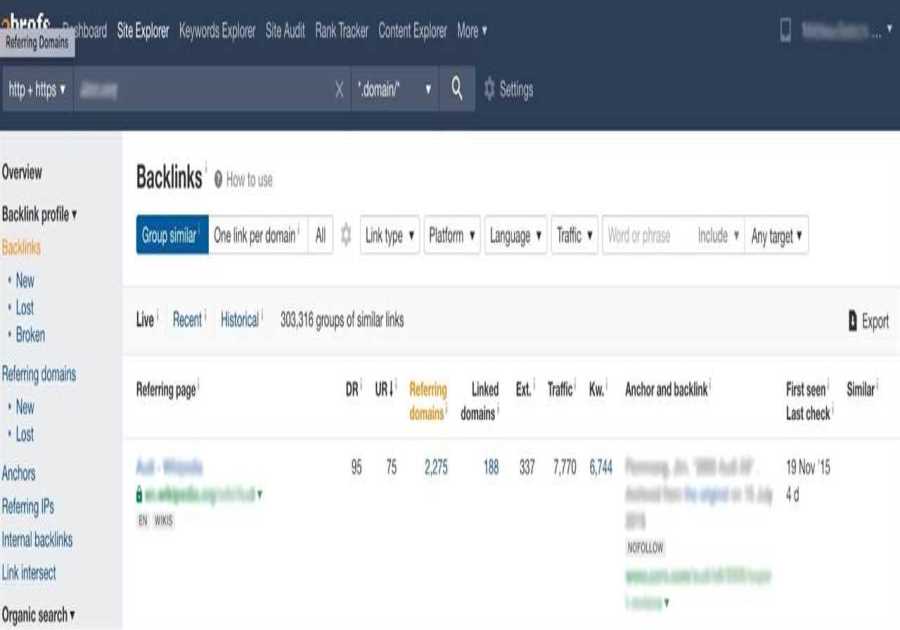
Gen Z has the fastest-growing buying power of any generation -- but it's still one of the most misunderstood and challenging age groups to market to.
While previous generations can be generally be persuaded to buy products through brand loyalty, fear of missing out, or high-budget ads from major companies, Gen-Z's relatively modest spending habits and craving for authenticity has turned some traditional marketing tactics upside down.
Gen Z's budget-consciousness became even more apparent during 2020 and the global pandemic. As physical stores closed, brands struggled to keep up with online sales demand, and as members of the young-adult workforce worried about job security, brands had to take even more steps to market to the age group.
Not only did marketing content have to establish that products were essential, worth purchasing, or readily available to Gen Z audiences, but brands also needed to prove that they were relatable, trustworthy, and shared values with them.
Because creating engaging content for Gen Z was no easy feat in 2020, Fanbytes -- an influencer talent agency -- began to host Gen Z TikTok influencers in a U.K.-based home where they lived full-time, created content, and collaborated during the 2020 lockdowns. This home was named, "Bytehouse."
![Download Now: Social Media Trends in 2021 [Free Report]](https://internetmarketingworldwide.com/images/blog/thumbnails/202103/img_11030243521.jpg)
What the Heck is Bytehouse?
At the moment, Bytehouse -- which BBC, The Guardian, and other news outlets referred to as a "TikTok house" -- hosts influencers including KT Franklin, Lily-Rose, Sebbyjon, Monty Keates, and the duo Em and Loz. According to Fanbytes content manager Shelly Chadha, the group of influencers, known as the "Bytesquad", have more than 10 million combined TikTok followers.
"Bytehouse was created in response to Gen Z consumer behavior, which has moved away from linear TV and towards social media," Chadha explains.
By housing Gen Z creators together, Chadha says, "We have ensured that the content is not only relatable and entertaining to young people but reflects their beliefs and behaviors. It was extremely important to us that ... [the influencers] are almost mirror images and can help answer any questions regarding identity, sexuality, and race."
While the Bytesquad churned out many non-branded TikTok videos, they also helped market products to Gen Z. For example, here’s a Bytesquad demo of products from the skincare brand Starface:
@bytesquadhqa little night routine for u all ##fyp ##foryou
♬ Elevator Music - BohomanShortly after the success of Bytehouse, a U.S.-version, called "Hype House," started housing YouTubers and TikTok influencers in Los Angeles. This house was also covered in publications like the New York Times and Cosmopolitan.
While influencer houses like these might seem more centered around entertainment than branding, these experiments have enabled content managers and agencies like Fanbytes to zone in on the Gen Z audience.
And while influencers might not be relevant to your marketing efforts now, you can still learn a great deal from the content they're creating for the unique Gen-Z demographic.
Luckily, if you're a marketer who can't get top Gen-Z talent to make content for you, there are still plenty of ways your team can engage and reach this audience.
To help marketers in their quest to capture the Gen-Z audience, Chadha offered us a handful of great tips for creating engaging content for the age group.
How to Create Marketing Content for Gen Z
1. Remember: Gen Z and Millennials aren't the same.
"One crucial mistake we see a lot of brands do is bundle up Gen Z and millennials into one category and create content that they believe will engage them simultaneously," Chadha explains.
For example, "Despite both [millennials and Gen Z] looking for authenticity in the content they consume, Gen Z takes this to a whole new level and possesses unique consumer behavior,” Chadha says.
Additionally, because Gen Z was raised around revolutionary technology, like smartphones and IPads, "the content they choose to consume is always in line with the newest trends, whereas millennials may not be so picky," Chadha explains. "It is compulsory for brands to be up-to-date with the newest innovations in the content they create if they want to win over Gen Z hearts."
Lastly, since Gen Z grew up in times of recession, while millennials grew up in an economic boom, Gen Z tends "to not trust brands quite as readily as millennials do," Chadha adds.
Chadha is not the only marketer to notice the key differences above. In a research-driven post, HubSpot dug into similar generational differences in spending, content consumption, and level of brand trust.
Ultimately, brands will need to leverage authentic, trustworthy, or entertaining content that demonstrates the value of a product to engage Gen Z. We'll dive more into what this looks like with the following tips.
2. Pick the right platform.
One thing is certain about Gen Z. They love experimenting with the latest social and video creation apps.
But, if you're marketing to young adults, it can be hard to determine which apps are just a trend, which have marketing potential, and which aren’t worth spending time on.
To ensure they're telling brands and influencers to focus on the right platforms, Fanbytes does deep research and testing on viral apps before recommending them to clients.
"For each new app that comes to our attention, we create a strategy using members of our team by researching [the app's] offerings. Not until we have completed thorough investigations into new platforms’ offerings will we advise which platforms are worth brands’ investments and which aren’t," Chadha explains.
For example, two platforms Chadha's team recently researched are Triller -- a music video creation platform and Instagram Reels -- a TikTok-like feature within the Instagram app.
Aside from spending time on Triller and Instagram Reels to learn how they work, as well as which influencers use them, “we look into the type of campaigns that can be run on these platforms and how other brands have used the platform," Chadha explains.
“We also activate test campaigns with real brands ourselves to put our insights into action and see if the platform can really deliver,” Chadha adds.
pps Fanbytes is WatchingTikTok
While TikTok saw astounding growth in its launch year, it received another burst in usage during the COVID-19 pandemic.
"The world saw a huge rise in the rate at which we consume short-form content, with Tiktok becoming the most downloaded app in a single quarter at the start of 2020," Chadha says.
"TikTok provided a form of escapism to so many people that needed to tune out to what was happening in the world whilst stuck indoors,” Chadha notes. “It also offered a constant feed of short-form content, from comedy to dance challenges and everything in between."
"TikTok has continued to rise in its numbers and other apps have risen or diversified their offerings to follow suit," Chadha adds.
But what makes TikTok rise above its competitors? Chadha explains:
"Instead of the polished aesthetics that platforms like Instagram perpetuate, TikTok values personality, originality, innovation, and fun. Consequently, TikTok offers all types of brands the opportunity to reach users in a way that they can’t do elsewhere."
Additionally, because TikTok's algorithms aim to match viewers with videos they'll enjoybased on data from the viewer and video-specific engagements, "brands and creators can go viral from a great piece of content regardless of follower count," Chadha says. "If a brand can understand the platform’s algorithm, the behavior of its users, and the trends, even if they only have 200 followers, they’re already 75% there."
If you choose to market your brand on TikTok, Chadha says it's important to define your "niche" and create attention-grabbing content around it.
While knowing you'll want to market to Gen Z is a good start to finding your TikTok niche, it's important to remember that there are many subgroups of young adults with different interests on the app. As you determine what your brand niche is, Chadha suggests asking yourself the following questions:
"What demographic do you want to drive traffic, sales, or clicks from? What content should you be creating to target those users? What influencers can you leverage to distribute the content?"Noting these things down is a great first step in your TikTok marketing journey and can make all the difference," Chadha says.
While TikTok can be a helpful tool for brands trying to reach Gen Z, you should still consider testing other similar apps as well. Although TikTok’s had historic app growth, it’s still vulnerable to bans, regulations, and censorship in certain countries which could impact marketers.
If regulations impact your TikTok strategy, staying in the know of other apps, such as those mentioned below, could help you smoothly pivot your content strategy elsewhere if needed.
Instagram Reels
"Instagram’s new Reels feature offers brands a more diverse and varied range of content on the platform and we’ve seen quite a few brands take advantage of this," says Chadha.
For example, this Reel from Louis Vuitton creates seamless transition content,"
View this post on InstagramA post shared by Louis Vuitton (@louisvuitton)
While Instagram Reels could have a promising outlook based on the success of other Instagram features, Chadha says Fanbytes is "still questioning" whether this alternative "will ever quite reach TikTok’s potential."
Although Reels might not be as viral as TikTok, marketers should still check it out -- especially if they've already gained Gen Z Instagram audiences. While TikTok has taken over app stores, Instagram Reels still allows you to reach Instagram’s audience of more than 2 billion users.
Triller
Right now, Triller -- a music video creation app -- might be more relevant to music industry companies. However, it might be a good app to keep on your radar for Gen Z research, especially if TikTok continues to see ban concerns around the world. To show you some of the similarities, here's a video that demonstrates how to make a Triller video:
"From our research, we have seen campaigns taking off on Triller due to its well-deserved reputation in the music industry. With investors like Snoop Dogg and Lil Wayne, it’s no wonder musicians have jumped on the app to create music videos using Triller’s built-in AI video editing software."
However, while Triller is seeing steady usage and campaign growth, Chadha notes that it still is more specific to brands and creators in the music industry, while TikTok is still more appropriate for brands with all sorts of niches.
"We believe that Triller is going to continue to grow after being downloaded 250 million times and reaching number one in the App Store in 50 different markets," says Chadha. "However, we don’t see it as direct competition to TikTok as Triller will continue to cement itself in the music marketing world whilst TikTok has the potential to grow in all other areas."
Catering your content to each platform.
Once you land on a platform, you'll want to follow some of the tips noted above to determine which types of content will stand out and which opportunities you'll have there.
For example, when ByteHouse launches branded content on TikTok, it's short, entertaining, and to the point.
@bytesquadhqa little get ready with us ##foryou ##fyp
♬ Elevator Music - BohomanMeanwhile, the group's YouTube page features longer-form videos that take more time to give detailed information about a brand. Here's an example where the group went to a restaurant called FUWA FUWA:
While ByteSquad offers quick information and attention-grabbing storylines on TikTok, they use YouTube to create more in-depth discussion around a brand.
3. Prioritize video and audio content.
"It is always advisable to go with a video approach in the content you’re creating. Gen Z rejects traditional advertising with their mobile-first mindset, spending an average of about 3.5 hours of internet videos a day," Chadha explains.
Chadha's words are backed by a handful of research studies. In one of the most recent from YouTube, Gen Z respondents polled said they couldn't "live" without YouTube content. The study also revealed that many members of Gen Z rely on video research when determining if they should make a purchase.
When it comes to Bytehouse, influencers there focused primarily on creating short-form videos, primarily for Gen Z platforms like TikTok. At the moment, Bytesquad's official TikTok account features hundreds of original videos targeted at Gen Z -- many of which have more than 100 thousand views. The squad also creates videos for platforms like YouTube and Instagram
Aside from video, Chadha says brands might also want to consider audio marketing as well. Examples of this could include creating podcast contentand advertising on music streaming services that are popular to Gen Z.
"We also predict that audio marketing is going to be big in 2021. Audio within marketing enables personalized content and intimacy, which Gen Z loves," Chadha says. "In a report by Pandora, the average daily audio streaming hours have increased by 32%. Digital audio now commands more listening time than traditional AM/FM radio, accounting for 53% of all daily audio consumption."
4. Hook your audience quickly.
"[Gen Z marketing] content shouldn’t just be informative, it should also be fast," Chadha advises. "Keep it snappy and to the point."
Regardless of which content type you use, it's key to remember that Gen Z only has an eight-second attention span. And, that span could be even shorter when surfing fast-paced social platforms with endless content.
To capture Gen Z’s attention, Chadha advises that marketing content has “to be super succinct and come with a great hook.”
Here's an example of a TikTok the ByteSquad created with a great hook. In the video, one of the members entices mystery by walking up to her roommates and saying "Look what I got." Because the video is shot from her point of view, you can't see what type of product she's holding but see her roommates' jealous reactions. As the video continues, it's revealed that everyone is jealous over the influencer's bag of food from McDonalds.
@bytesquadhqWhen maccies re opened?
♬ original sound - ByteHouse5. Embrace advertainment.
Once you hook your audience, you'll want to keep them entertained while continuing to differentiate your content from dull product placements.
Chadha says one of the biggest challenges Gen Z marketers face is creating entertaining content that still interestingly highlights a product or brand.
"If the campaign is intrusive with brand logos plastered everywhere, the users will know they’re being advertised to and the content won’t appear organic," Chadha explains.
Ultimately, Chadha says the "only way" marketers can be successful on TikTok or other prominent Gen Z platforms is by naturally balancing attention-grabbing content with brand information.
"This means adopting our ‘advertainment’ approach; entertainment first, product-second mentality," Chadha advises. "By studying [a Gen Z platform] and making use of its tools, features, and trends ... you can successfully win the hearts of its users."
One example of how Fanbytes has helped brands reach Gen Z is a recent campaign they did with Idahoan Foods
When food content was on the rise during lockdowns, Idahoan Foods wanted to drive Gen-Z awareness to their instant mashed potato products.
Instead of launching traditional ads, Fanbytes created a custom TikTok sound, "leveraged influencers, and created a dance challenge to draw users in to connect with the brand," Chadha explains.
The video below highlights one example of an advertainment video Idahoan Foods published on TikTok. In the short-clip, an influencer named Nico Bisesi compares the taste of Idahoan's instant potatoes to that of a butter knife.
@idahoanfoodsIt's ##MagicMonday with @nico_bisesi ! How does he do it?! ##IdahoanMash
♬ original sound - Idahoan FoodsWhile the video clearly shows an Idahoan Foods product placement, viewers might be more intrigued by the oddness of the story. For example, rather than getting bored by a video ad, TikTok viewers might ask themselves, "Why did he eat that knife?" or "What will happen next?"
Chadha notes that Idahoan Foods' overall TikTok strategy has resulted in more than 14 million TikTok video views, 211 pieces of user-generated content, and 3,700 added Idahoan Foods followers.
When determining why the tactic was so successful, Chandra believes it was due to the brand focusing more on the level of content entertainment and less on intrusive product placement.
"We didn’t plaster [Idahoan Foods] everywhere, but instead found a way to connect [Gen Z] users with the product through an entertaining concept," Chadha says.
6. Embrace retargeting.
"Gen Z’s quick attention span also means that they will most likely scroll past any ads quickly," Chadha adds.
Because Gen Z speeds past ads, brands that leverage advertising will likely need to show their promotions to Gen Z more than once.
"[Gen Z is] bombarded with ads hundreds of times a day and so one ad is not going to win them over,” Chadha explains. “Utilising retargeting helps you keep front of mind and enables users to feel that they know you.”
7. Leverage influencer marketing (and it doesn't have to be TikTok!).
While you don't need influencers to take advantage of all the tips on this list, they can still be quite beneficial when you have access to them.
"A great opportunity to generate a lasting and meaningful impression on Gen Z is through influencer marketing. Gen Z is a group who buy into people rather than brands and autonomy rather than big corporations," Chadha explains. "So, building relationships with influencers who have built strong relationships with your target market is a good way to go."
Through leveraging influencer marketing at Fanbytes, Chadha says the agency has received "astonishing results" for its brand clients.
"Let’s take ACCA, the leading international accounting body as an example," Chadha adds. "They approached us as they were looking to change perceptions of accountancy from ‘dull, boring and exclusive’ to ‘exciting, impactful and relevant’ amongst Gen Z."
"We selected some of our best influencers who are reliable voices in the TikTok community to head to an accountancy firm for a day and film ‘day in the life’ content for their fans.
In the video below, captioned with "Work time vs LUNCH TIME ? Relatable?" Sherice Banton, a TikTok creator with more than 1.7 million followers, pretends to work alongside actual accountants. After seeing a few clips of her working in a seemingly normal office, one clip -- which symbolizes lunchtime -- shows her dancing alongside the accountants.
@shericebantonWork time vs LUNCH TIME ? Relatable? ? Such fun with ##ACCA Accountants at Flinder ?? ##Comedy ##ad
♬ original sound - bitsThe video not only allowed viewers to get a glimpse into the world of accounting, but also made the topic of working in an office funny, entertaining, and relatable to anyone who watched. Chadha notes that this campaign drove more than 6.2 million video views, 182,000 TikTok "hearts," and over a thousand comments.
Some of the best places to leverage influencer marketing could be on short-form video platforms, such as Instagram Reels or TikTok. This type of strategy can be especially helpful if you want to leverage a viral video platform but haven't mastered the hottest content types, trends, or audience yet. Because influencers have built a following on a given platform, they'll likely know what content works and how to implement information about your brand or product in those videos.
While Fanbytes works with macro-level TikTok influencers, smaller brands don't have to toss this strategy aside if they can't access a big name or don't know if TikTok is right for them. While it might be more challenging to access major influencers, there are plenty of micro-level creators across social platforms with large follower-bases and strong expertise in many niches.
For example, if you sell fitness products, you might consider working with a creator who posts their workouts regularly, talks about the products they use, and has thousands of engaged followers or regular comments on their content. Similarly, if you sell clothing, you could look for creators known for posting regularly about fashion trends.
8. Let Gen Z create content for you.
"Marketers who are targeting Gen Z also have the opportunity to supercharge their campaigns by inspiring [audiences] to create content for their brand," Chadha explains. "Gen Z loves to be creative and really experience a brand through content creation. If the concept [of your campaign] is on-trend, you might be able to build an army of fans creating content for you without having to lift a finger."
"Take the #davidstesla trend for example. It began with a collaboration between G FUEL, an energy drink brand, and David Dobrik, a popular creator on Youtube and TikTok. The collaboration was created as a contest where David would give away a Tesla to the user who creates the best video and follows the G Fuel page."
Since launching this campaign, G FUEL's TikTok page has grown to more than 863 thousand followers and received more than 12 million likes.
Aside from the high-priced prize, Chadha explains the campaign went viral "because it puts the audience in control by giving them the opportunity to vote on the best videos via the amount of views, shares, and engagement on a video submission."
"Secondly, it merges our concept of 'advertainment' seamlessly by hardly mentioning the product. Instead, the product is integrated subtly but is still required to follow the page to be considered," Chadha adds.
Even if you don't have access to a top influencer -- or a free Tesla -- user-generated content can still be beneficial for your brand.
For example, you could host a smaller-scale version of a giveaway that asks audiences to create content for a chance of winning one of your products. Or, you could offer to share the best user-generated videos on your site or social media channels, which might encourage people to create videos in hopes of gaining online awareness.
9. Study and embrace Gen Z trends.
"A generation that grew up with fast-paced technological developments and social media, [Gen Z is] extremely digitally savvy and used to adjusting to new technology. Because of this, trends on platforms such as TikTok move extremely fast and the content that’s popular on social media platforms one minute may be out the window the next," Chadha says.
"Brands need to be all over social media ... and constantly check in with the latest and greatest trends so that they are always a part of the conversation," Chadha explains.
"Our number one piece of advice would be to be active on the platform you’re trying to dominate. This means not only as a marketer -- but as an interested user," Chadha advises.
"You may hear about viral TikTok trends but you will never know the power [a platform] possesses and the many types of content forms and trends it circulates every week unless you are spending at least 15 minutes a day on there," Chadha explains.
Surfing through content on the platform you're most interested in, "Will teach you how to master the platform and build a strong strategy so that you’re not leaving anything to chance," according to Chadha.
10. Don't be afraid to share your values.
"Unlike millennials, who care more about what a brand can do for them, Gen Z looks for authentic messages and what a brand stands for," Chadha explains. Growing up with the likes of Greta Thunberg, Gen Z is a generation that stands up for what they believe in and they expect the brands they invest in to do the same."
"The content Gen Z is interested in should speak to what they believe in and have messages communicated to them as a friend would, rather than an intrusive corporation," Chadha adds. "Leave the flashy advertising behind and tap into the real and raw side of your brand. Think entertainment first, product second."
Chadha explains that branded content "shouldn't be limited to advertisements or product placements. … By creating content that provides insight into [brand] stances on socio-political issues and the story behind the brand," companies could gain more trust, loyalty, and potentially conversions from Gen Z.
Should You Target Gen Z?
Now that you know how much effort you'll need to put into targeting Gen Z, you might be asking yourself, "Should I target this generation?"
Well, if you market for a B2C brand, or a B2B brand with products that solve for all age groups in the workforce, you'll either want to start planning or zone in on a Gen Z strategy. While they might not have full purchasing power yet, many of them have reached adulthood, are getting jobs, and starting to make their own purchasing decisions.
As this generation inches closer to becoming one of your marketing targets, it will be vital to do as much research on them as possible. You can get started by diving into our content on how Gen Z differs from other generations, spends money, and other need-to-know Gen Z data.


By: [email protected] (Pamela Bump)
Title: How to Create Content for Gen Z, From a TikTok-Influencer-Approved Marketing Agency
Sourced From: Original article available: blog.hubspot.com/marketing/tiktok-influencer-agency-tips-for-creating-gen-z-content
Published Date: 2021 03 09
Did you miss our previous article...
https://internetmarketingworldwide.com/social-media/how-much-do-bing-ads-cost






